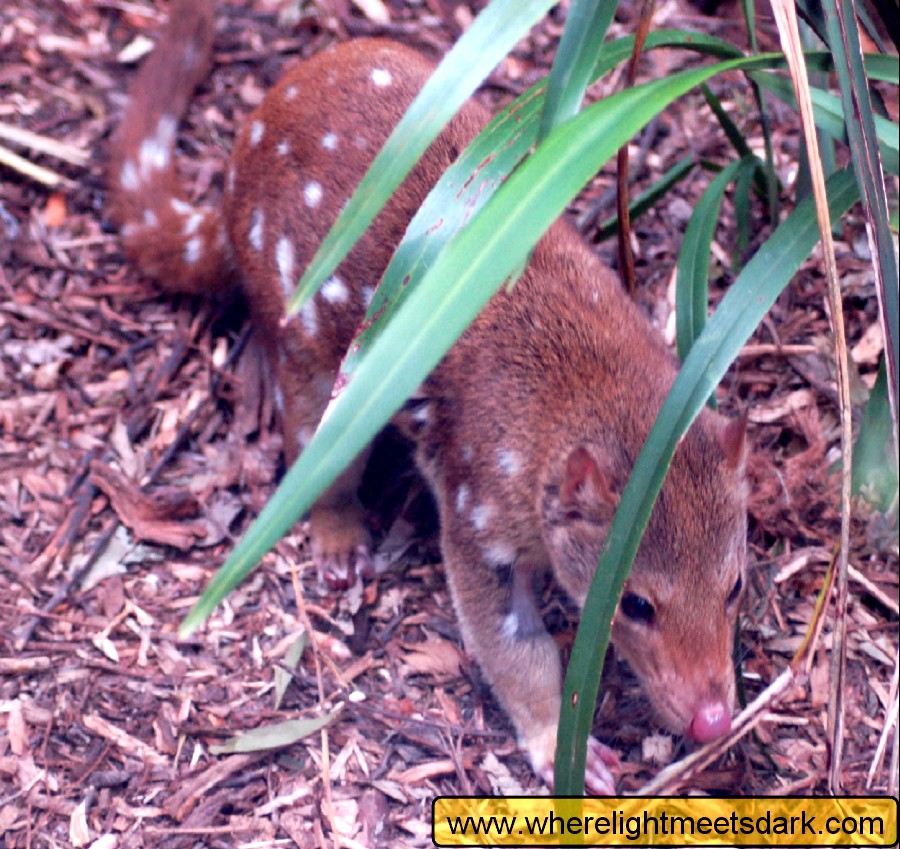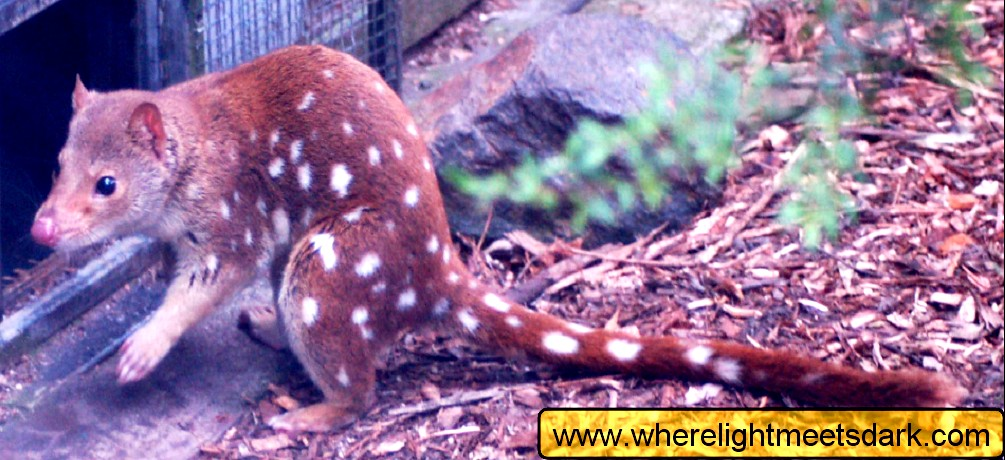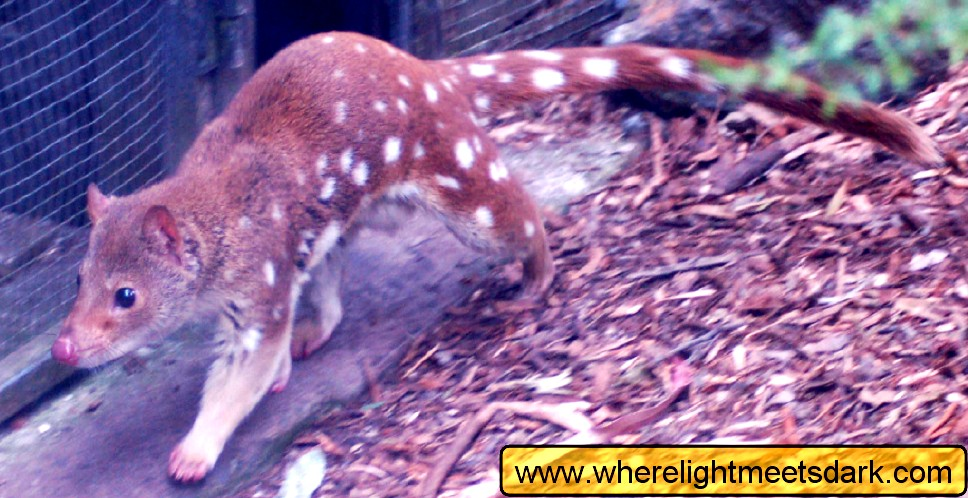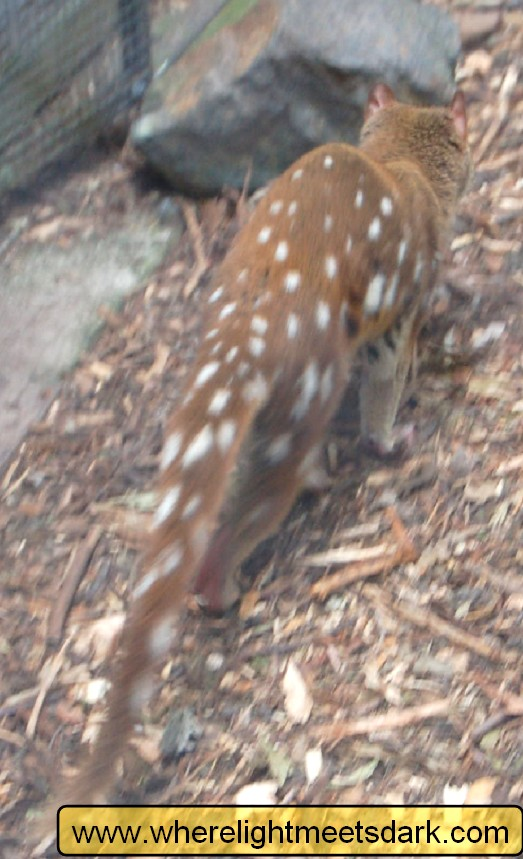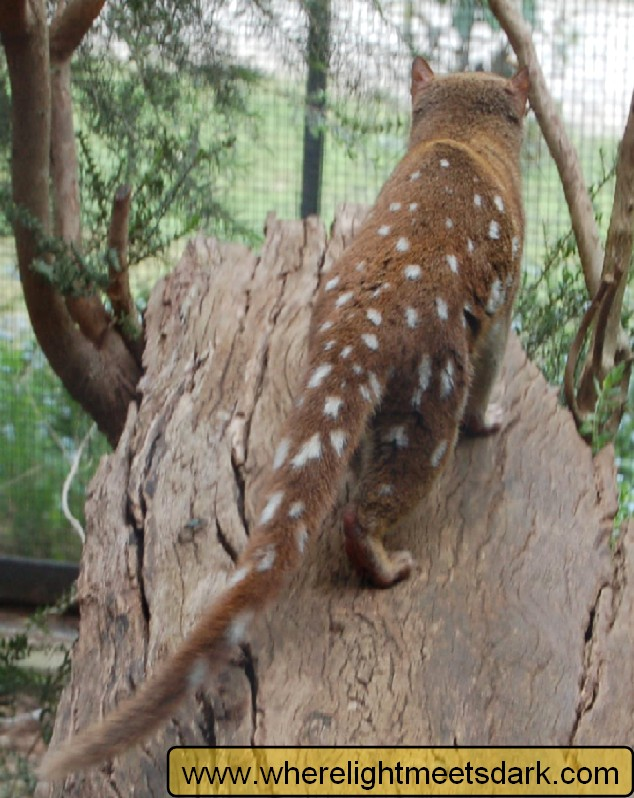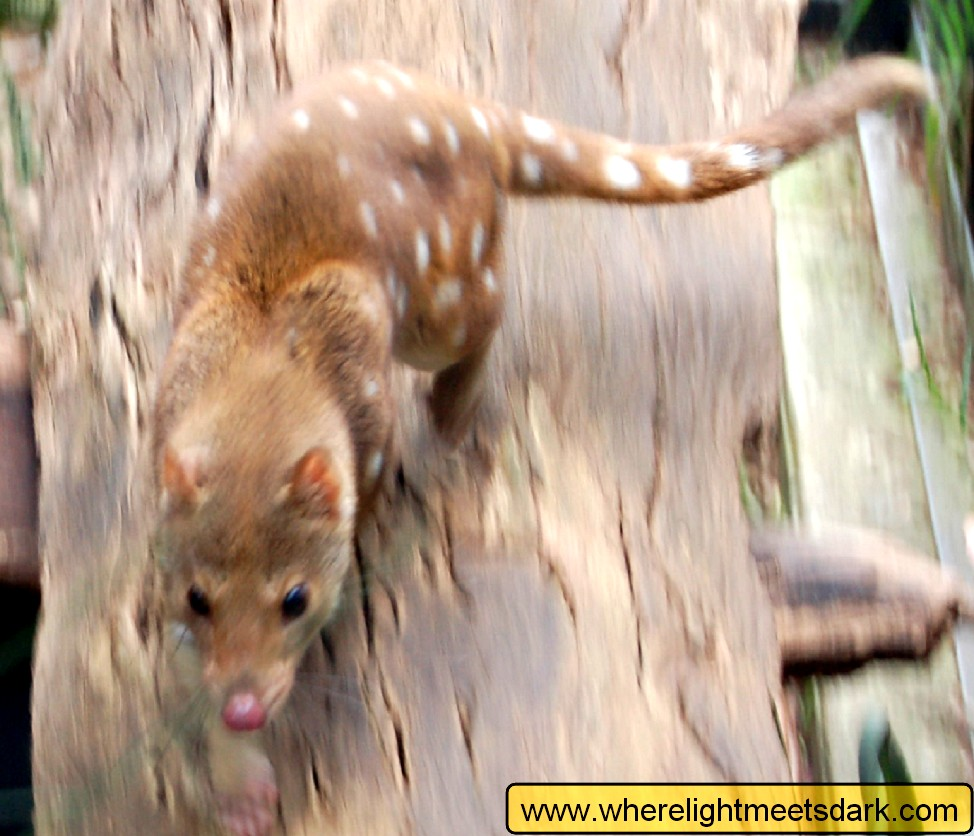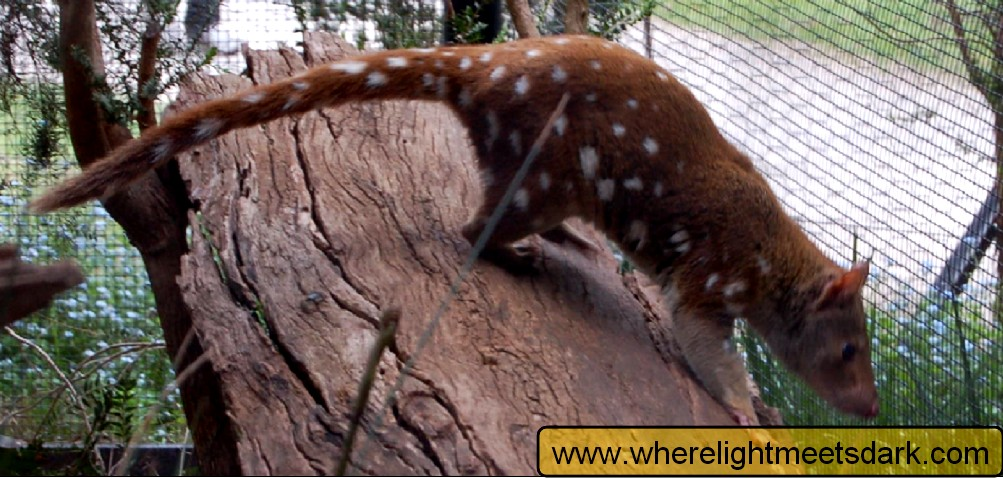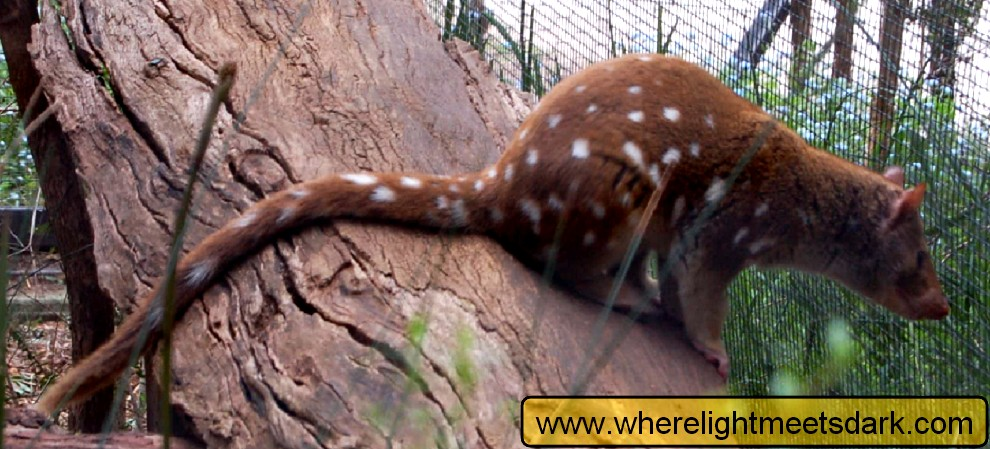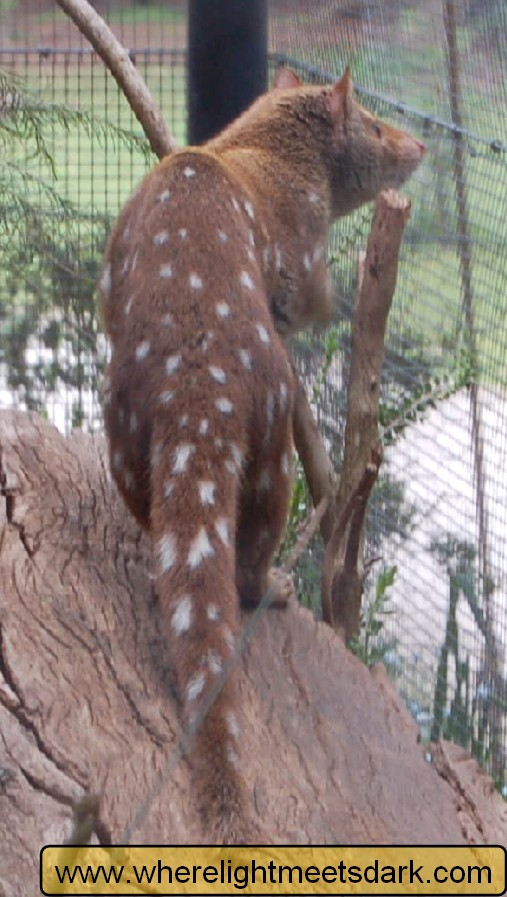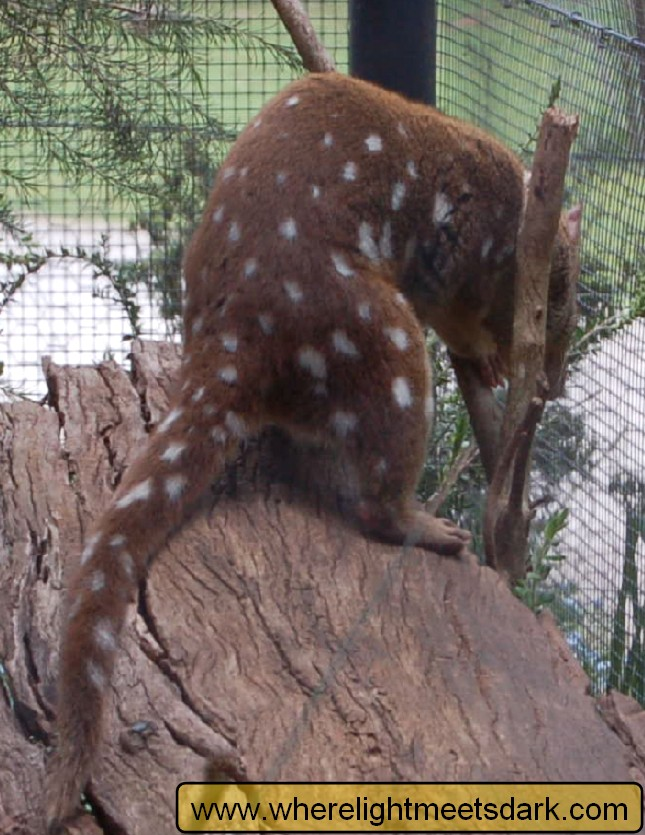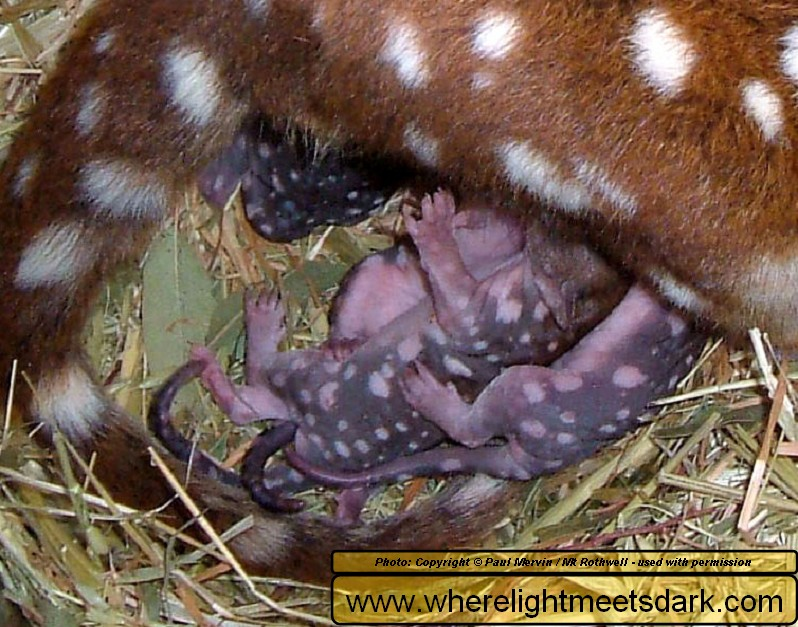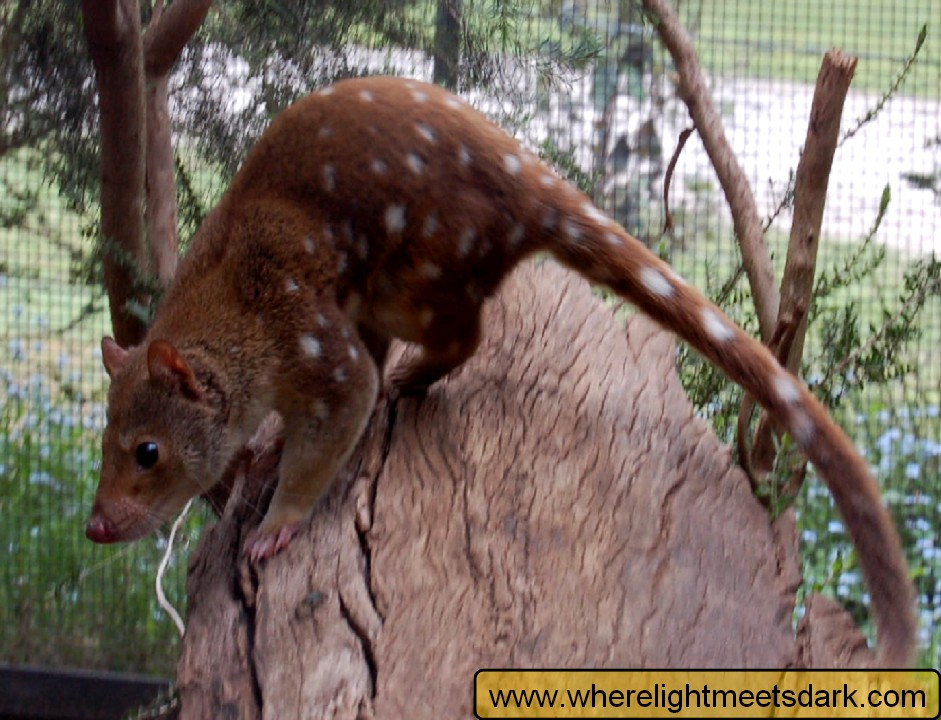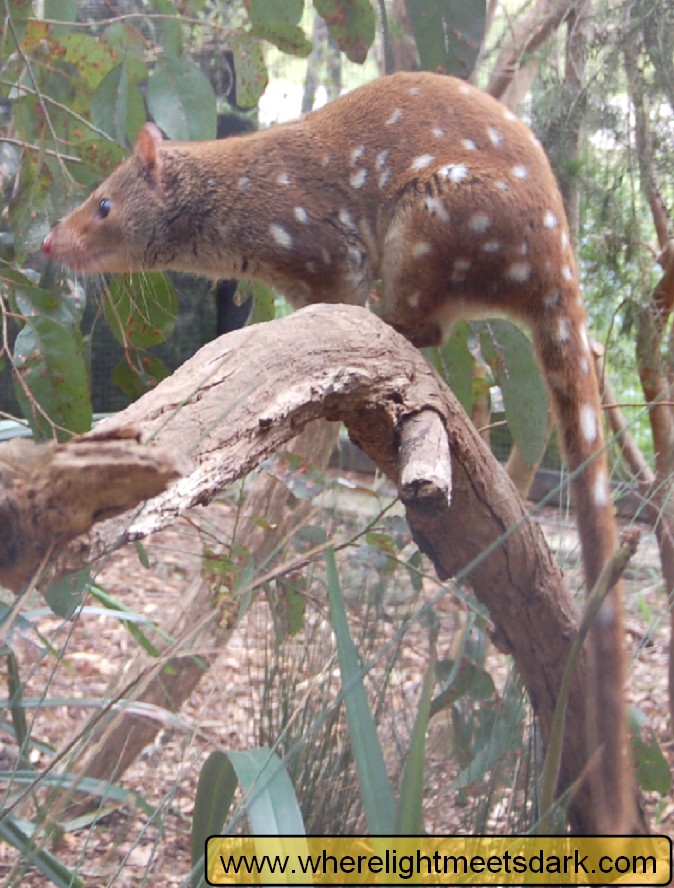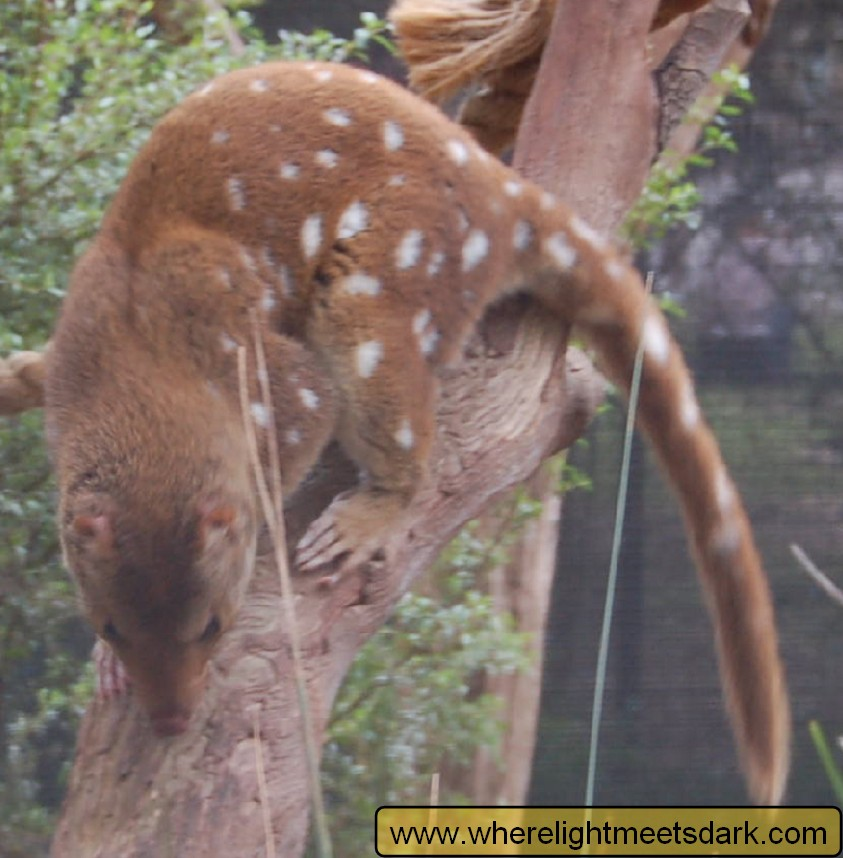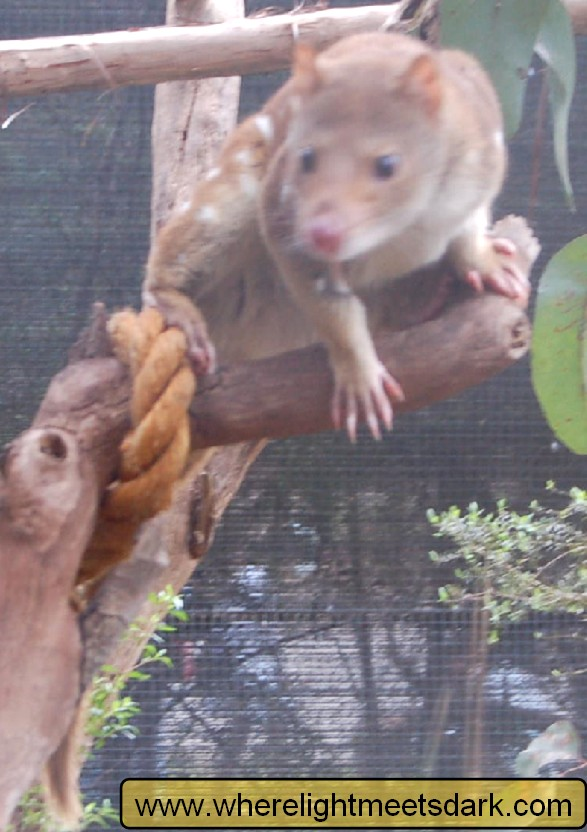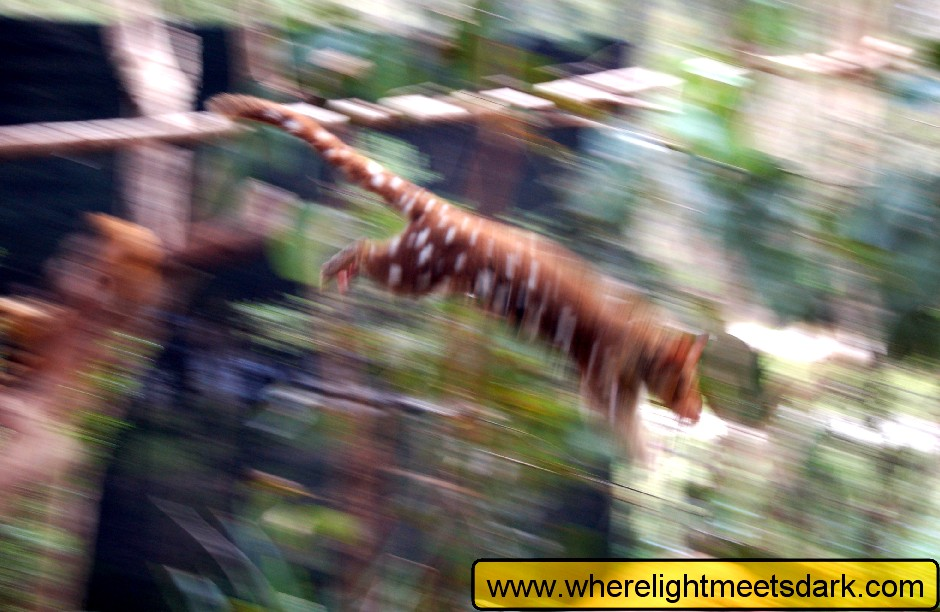Spotted-tailed quoll Dasyurus maculatus photo gallery
What a stunner!
This gallery will speak for itself. There are 16 photos here - far too many to comment on, and not all of them great quality, but the spotted-tailed quoll, otherwise known as the tiger quoll, is one of the least represented Australian mammals on the internet; so here she is, in all her glory.
This cute girl comes from Healesville Sanctuary in Victoria, Australia. She doesn't even rate a mention their zoo map - or maybe they're trying to keep the world's best secret just that.
Here she is walking along beneath some overhanging foliage.
Sitting in front of her den. Others have remarked that it's rare to see her active. I visited the Sanctuary on two days running and had the pleasure of seeing her twice. Between the two days I had my camera battery expire and my video tape also fill up. Unfortunately I have only a fraction of the photos I would have loved to take.
Thankfully she decided not to retreat just yet, and I'm glad it was so - some of the better photos are coming up.
These were taken near the end of the day, in poor light, and through a black wire mesh (similar to that seen in the background here). It's a miracle so many of the photos came out as clearly as they did (see below).
In this photo she is closer to her natural colouration. From this angle you can see why the early settlers called this the "native cat" - apart from the colouration, the appearance is almost identical. It's not until you see the eyes, nose and face that the difference becomes striking.
This photo shows the same angle again, but with richer colours.
Spotted-tailed quolls used to be more common on the Australian mainland, but landclearing and fragmentation, foxes, and cane toads have all taken their toll. It is significant to note that the airline Emirates has recently announced the development of a 4000 acre property to the west of the Blue Mountains (New South Wales) on which they hope to turn farmland back into pristine bushland. The spotted-tailed quoll is just one of the many endangered species they hope to conserve through their actions. Just 5 percent of the property will be used for ultra-high class resort accommodation.
And here's the cutie coming back towards the camera. You can clearly see five toes on the forepaw. All Australian quolls have the same number of toes on their hind paws except the Eastern quoll, which has four and is decidedly less arboreal.
Except for being bright pink, the rich, round nose shows a clear similarity to the related Tasmanian devil.
Shall I stay or shall I go? To jump or not to jump? In the end she decided to stay, but I don't know what caught her attention there.
A keeper gave me a little history behind this quoll. As you will have noted from the descriptions, she's female. She recently had had a tumour (or similar abnormality) cut out from her forearm. It turned out not to be cancerous but when she came off the anesthetic she was just a wee bit grumpy, lashing out at a keeper who herself then needed stitches in the arm. You have to remember this is the largest marsupial predator confirmed to be living in the wild on mainland Australia - cute she may be, but her teeth pack a punch.
A typical spotted-tailed quoll diet would include small mammals such as rodents, but larger mammals such as rabbits and possums make fair game too. Just thinking about that gives you reason to pause and consider what a significant role this species could play in our ecosystems. Quite feasibly this animal could defend itself against foxes and cats, but the fact remains these latter interlopers also compete for the same food sources.
Back up the log to keep checking out whatever took her fancy that day. From the angle she's looking, perhaps it was a bird.
Spotted-tailed quolls are still relatively common in Tasmania, where they share their habitat with the Eastern quoll. The Eastern quoll is considerably smaller, generally spends most of its time on the ground and has not been confirmed on the mainland since 1963 - although I hope soon to publish a paper questioning this date (more to come...) The Eastern quoll also forms the basis of a search I am undertaking in bushland in New South Wales - given some recent and credible sightings, I believe the species may yet be extant. Again, watch this space (the homepage announcements) for news.
But let's put the spotlight rightfully back on this little gem. The spotted-tailed quolls spots, quite interestingly, form on its skin - it is not just a hair pattern.
This time something below her has caught her attention.
This photograph illustrates the point just made - that pouch young spotted-tailed quolls already have their spots, even before the fur has grown.
The photograph was supplied by Paul Mervin of Mt Rothwell Conservation and Research Centre in Victoria. The free-range feral-proofed animal sanctuary has successfully bred both spotted-tailed and Eastern quolls in the past and Paul tells me "Those babies in the pic are from 2005 and some went to Healesville so who knows, you may have her first pic when she was still with mum!"
Ready to jump. Here the whole forearm structure shows this animal's strength in its ability to climb and reminds me rather of a brushtail possum. This isn't quite the best shot for it, but frequently I see photos of spotted-tailed quolls where their eyes take on a bulging appearance, again similar to the common brushy.
The spotted-tailed quoll, as you might guess, is the only quoll species with spots on its tail. On the mainland its habitat overlapped with the Eastern quoll. Apart from the tail spots, another significant visual difference is the thickness of its muzzle. The Eastern appears far more pointed and seems to have "beadier" eyes.
In this photograph the spotted-tailed quoll has taken on the posture of a tree kangaroo. Again, the more I watch this fascinating creature, the more I see it as a conglomerate of Australia's unique and bizarre fauna. Tree-kangaroo one moment, brushtail possum the next, then part Tasmanian devil and lastly (see the next photo), its head and muzzle take on the appearance of the related, but tiny, antechinus.
Actually, now that we're here, I really think you can see elements of the thylacine's shape in the dorsal view of this spotted-tailed quoll's head - particularly around the eyes (compare the banner at the left of this page which, incidentally, also shows an Eastern quoll)
This is the only photo in this article for which colour correction was not applied - not that that necessarily means it is a truer reflection of the animal's real colour (and everyone's monitor will vary).
Not the world's best photo, but very cute. Five clear fingers are visible again.
... and for our grand finale ...
Check this out. Can you believe it? A gorgeous animal and she can jump from tree to tree. I know this is blurry and the colour correction has saturated it but in many respects this one photo brings the animal to life. She really was completely animated the whole time I was with her. From time to time she came right up to me and sniffed at my fingers, but note the warning the keeper gave to me: Do not let her have the chance to bite you; she might just take it up.
If you ever do get the chance to visit a spotted-tailed quoll, be sure to take it. I hope it's as active as this one was - they're well worth the visit.
Revisions
This article was originally published on 13 Dec 2007 at wherelightmeetsdark.com.
